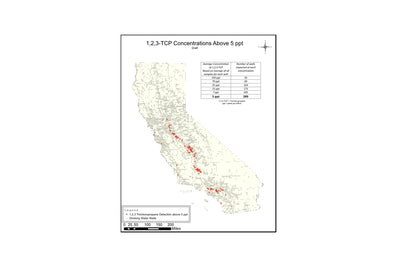Analies Dyjak | Policy Nerd
For Hydroviv’s assessment of Mountain View, California’s drinking water, we collected water quality test data from the city’s website and the U.S. Environmental Protection Agency. We cross referenced Mountain View’s water quality data with toxicity studies in scientific and medical literature. The water filters that we sell at Hydroviv are optimized to filter out contaminants that are found in Mountain View’s drinking water.
Where Does Mountain View Source Its Drinking Water?
Mountain View supplies 8 million gallons of water to 80,000 residents on a daily basis. The city purchases 88% of its drinking water from the San Francisco Public Utilities Commission (SFPUC). A majority of this water is drawn from the Hetch Hetchy Reservoir in Yosemite National Park. 10% of Mountain View’s water is purchased from Santa Clara Valley Water District (SCVWD). Half of the SCVWD water is drawn from the San Joaquin Delta and the other half comes from local surface water and groundwater reservoirs. The remaining water comes from groundwater wells around the city.
Lead In Mountain View Drinking Water
In recent years, Mountain View has had a huge problem with lead in drinking water. 10% of sites that were tested for lead had concentrations over 7.7 parts per billion. Though Mountain View's water quality is currently in compliance with the federal Action Level of 15 parts per billion, Environmental Protection Agency and Center for Disease Control EPA both recognize that there is no safe level of lead, especially for children. Additionally, these measurements may not be a true indication of your tap water if your home has lead plumbing or lead fixtures. Treated water leaving the plant may be in compliance with loose EPA standards, but could become contaminated once it enters older infrastructure. Lead enters tap water through old lead service pipes and lead-containing plumbing. Houses built before 1986 were most likely built with lead plumbing and lead fixtures. Lead exposure can cause developmental issues, lowered IQ, and damages to the kidneys and brain.
Chromium 6 In Mountain View Drinking Water
Chromium 6 is a highly toxic metal that is currently unregulated by the EPA. In recent years, Mountain View's water quality has had a major problem with this dangerous contaminant. Chromium 6 pollution is associated with metal processing, tannery facilities, chromate production, stainless steel welding, and pigment production. The report found an average concentration of 1 parts per billion of Chromium 6 in Mountain View drinking water. These levels are as high as 50 times higher than the concentration determined to have a negligible impact on cancer risk. EPA has acknowledged that Chromium 6 is a known human carcinogen through inhalation, but is still determining its cancer potential through ingestion of drinking water. Lung, nasal and sinus cancers are associated with Chromium 6 exposure. Ingestion of extremely high doses of chromium 6 compounds can cause acute respiratory disease, cardiovascular, gastrointestinal, hematological, hepatic, renal, and neurological distress which may result in death.
Chloramine In Mountain View Drinking Water
While most municipalities use chlorine as the primary drinking water disinfectant, Mountain View’s drinking and tap water is disinfected with chloramine. Chloramine is primarily responsible for what many customers report as the “bad taste” or “pool smell” of tap water. Unlike chlorine, chloramine does not dissipate if a container of water is left in the refrigerator overnight. Most one-size-fits-all water filters use filtration media that doesn’t do a great job removing chloramine, but the filters that we design and build at Hydroviv for Norman use a special filtration media that is purposefully designed to remove chloramine.
It’s important to note that only a handful of contaminants are required to be included in annual Consumer Confidence Reports, and that there are hundreds of potentially harmful unregulated contaminants that aren’t accounted for. If you’re interested in learning more about water filters that have been optimized for Mountain View tap water quality, feel free to visit www.hydroviv.com to talk to a Water Nerd on our live chat feature or send us an email at hello@hydroviv.com.
Other Articles We Think You Might Enjoy:
5 Things To Know About Chromium 6 In Drinking Water
Lead In Drinking Water
Chloramine In Drinking Water





